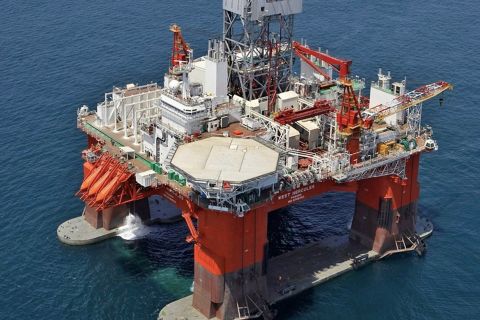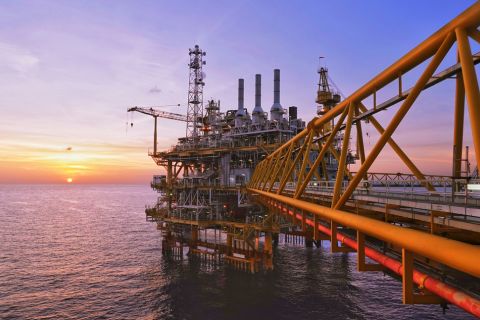
Despite the growing trend, management teams are still exploring mergers and large-scale acquisitions, according to a recent snapshot of analyst reports. (Source: Shutterstock.com)
Learn more about Hart Energy Conferences
Get our latest conference schedules, updates and insights straight to your inbox.
[Editor's note: A version of this story appears in the August 2019 edition of Oil and Gas Investor. Subscribe to the magazine here.]
The A&D market’s mana, drained by nearly nine months of flabby oil prices, is replenishing, mostly with smallish deals. But a larger liability is looming.
So far in 2019, oil and gas deals have taken an indie turn in the market, with mid-sized deals transacting in Alaska and the southern Midland Basin. Management teams are still exploring mergers and large-scale acquisitions, according to a recent snapshot of analyst reports.
Companies such as EOG Resources Inc., Chesapeake Energy Corp., Pioneer Natural Resources Co. and others are being picked by analysts (Out of thin air? Who knows?) as potential buyers and sellers.
Capital One Securities analyst reports identified several potential deal makers—with caveats aplenty:
- Ring Energy Inc. closed its Wishbone acquisition in April and will continue to look at smaller deals—but its balance sheet “likely keeps the company on the sidelines from pursuing larger acquisitions”;
- Pioneer continues to look at monetizing the far end of its drilling inventory—however, a Drillco is much more likely, with a decision expected in the second half of 2019;
- Noble Energy Inc. remains open to acquisitions and consolidation over time—yet CEO Dave Stove told Capital One he believes M&A will play out over time with the volatility in oil, gas and equity prices slowing the pace of deals; and
- In a July 7 report, Goldman Sachs analysts additionally ranked EOG and Pioneer as top-ranked M&A candidates, which the firm considers a 30% to 50% probability that they could become acquisition targets.
On the sly in the second quarter, crafty business development folk have been breaking trail to execute deals in a cold market. In a July 10 regulatory filing, for instance, Magnolia Oil & Gas Corp. reported that it would buy Eagle Ford and Austin Chalk assets.
Magnolia bought from companies it collectively called “Titanium” sellers: VP EF LP and VP EF Royalty LP. The assets, which were not otherwise detailed, will be purchased with an undisclosed sum of cash and about 3 million shares of newly issued Magnolia stock. On May 6, the day of the agreement, the stock portion of the deal was worth about $39.7 million.
In March, June and July, another unnoticed serial buyer, Foothills Exploration Inc., continued to make deals in Wyoming and Montana. The independent company has agreed to or closed deals on 29,156 acres of oil and gas leasehold, though it hasn’t disclosed the value of its transactions.
As with the second quarter’s Occidental Petroleum Corp. merger agreement with Anadarko Petroleum Corp., smaller deals have been drowned out. The much-ballyhooed $2.2 billion Comstock Resources Inc. combination with Covey Park Energy LLC (brought to you by Dallas Cowboys owner Jerry Jones) dominated analysis with the novel concept of private companies selling to public E&Ps.
The deal also set off speculation among Morgan Stanley analysts that Chesapeake might look a lot more appetizing for investors if it could pull off a sale of its own Haynesville acreage.
Morgan Stanley estimates that Chesapeake’s year-end 2019 leverage will be 4.3 times, the firm said in a June 27 report. A divestment on the scale and valuation of Covey Park would drop the company’s leverage to 0.8 times, Morgan Stanley said in a June 27 report.
However, in the A&D Fantasy Leagues, the bid-ask spread remains a real hurdle. Could the debt-factor—overall, E&Ps are staggeringly overleveraged—be the catalyst that finally gets deals done?
A July 11 Fitch Ratings report delved into just how in the red E&Ps are. Think scarlet. In the past 12 months, the default rate for energy companies’ debt stands at 4.1% compared to 1.9% for the overall market. So far this year, energy accounts for 30%, or $5.4 billion, of defaults. Energy includes various commodity types, such as coal, along with oil and gas.
But some upstream companies are closer to their own end zone than they would like. Sanchez Energy Corp., for instance, has a July 15 interest payment on its largest unsecured tranche, Fitch said. (Editor’s note: Sanchez Energy filed for bankruptcy on Aug. 11, 2019.)
On the bright side, several companies were removed from the bond naughty list due to “M&A activity or improved liquidity,” Fitch said.
E&Ps such as Sanchez, EP Energy Corp., Denbury Resources Inc. and Ultra Resources Corp. top the crimson zone with a combined $9.4 billion in debt due in July and August.
In A&D land, the reality of this may prove harsh. Sellers are, rightfully, holding out for the best price possible for their assets. How long they hold out may be a matter of their noncore portfolio and the flexibility of their lenders.
As the joke goes, “bankers help you with the problems you would not have had without them.”
Recommended Reading
US Drillers Add Oil, Gas Rigs for Second Week in a Row
2024-01-26 - The oil and gas rig count, an early indicator of future output, rose by one to 621 in the week to Jan. 26.
Second Light Oil Discovery in Mopane-1X Well
2024-01-26 - Galp Energia's Avo-2 target in the Mopane-1X well offshore Namibia delivers second significant column of light oil.
CNOOC Sets Increased 2024-2026 Production Targets
2024-01-25 - CNOOC Ltd. plans on $17.5B capex in 2024, with 63% of that dedicated to project development.
Sangomar FPSO Arrives Offshore Senegal
2024-02-13 - Woodside’s Sangomar Field on track to start production in mid-2024.
NAPE: Chevron’s Chris Powers Talks Traditional Oil, Gas Role in CCUS
2024-02-12 - Policy, innovation and partnership are among the areas needed to help grow the emerging CCUS sector, a Chevron executive said.





